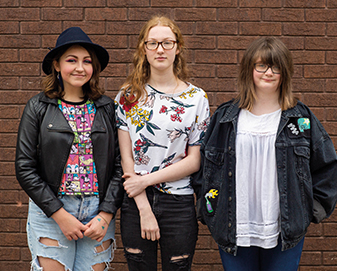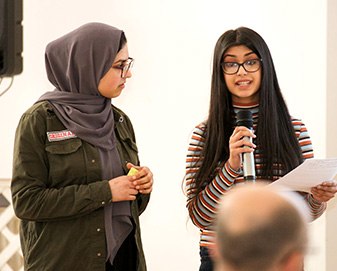Mental Health Services
The Citizen Researchers based their recommendations on the experiences of young service users in five diverse areas of England. They include existing practice that works and areas where change is needed. The recommendations are presented in no particular order.
Are easy to access

Young people want a range of ways to seek help that reflect their different needs and preferences. These should include:
- 24/7 helpline support;
- Drop-in sessions that don’t clash with school or college hours;
- Online help, such as forums, messaging and websites;
- Home visits, especially for young people with mental or physical conditions that make it hard to leave home.
The Citizen Researchers also suggested an app linked to local mental health services. The app would give young people access to ongoing support and advice. It is important to young people that some of the ways to seek help are anonymous. This would allow them to seek help without feeling judged, uncomfortable or fearing public exposure. This is particularly important for young men.
All young people who need help should be able to access services. Services should address barriers caused by language, or physical and learning disabilities. They should take into account financial barriers, such as being unable to afford transport fares to an appointment. Services should be located in places that young people can get to unaccompanied.
Ensure continuity of care
Young people want an end to the system of offering limited weeks of treatment. Instead they want a continuous assessment of need. This would reduce the pressure and stress on young people to ‘feel better’ within a defined period.
Young people also want a more trusting and sustained relationship with a particular professional. Changes in practitioner can be disruptive and make young people feel like they have to start again with each change. Young people want stability.
Provide good transitions between youth and adult services
Young people want smoother, quicker, and more reliable transitions between youth and adult services. Young people can find transition stressful, particularly if they feel nervous or uncomfortable trusting new people and places. Services should provide a buddying system which links young people in transition with young people who have already transitioned. They should use regular meetings and fun activities to help young people settle into the new service. Waiting times during transition should be cut to help stop young people ‘falling through the net’.
Share data and pass on information

Young people want services to be better at sharing patients’ data. They don’t want to keep reliving experiences in order to explain their situation to new people. This is true when they see different professionals within the same service and when they transition between services.
Young people also suggested that services should share data to create a pool of information about a family. This includes services beyond those focused on mental health.
Support young people on (shorter) waiting lists
Young people want shorter waiting lists and better support for young people while they are waiting. Services should send young people regular updates about the progress of their referrals. There should be an app that young people on waiting lists can use to access support.
Use spaces where young people feel comfortable
Young people want treatment and consultation to happen in spaces where they feel comfortable. These include safe yet familiar settings such as community and youth centres. Young people are less comfortable in clinical or hospitalised spaces.
Offer treatment options

Young people want more control over their treatment. Many young people want to be offered talking therapies before being given medication. Young people also want services to offer them alternatives if they are unhappy with their treatment or assigned professional.
Listen to young people and take action
Young people want services to have better feedback and complaint procedures. Services should provide feedback opportunities appropriate for all ages. Feedback should be collected regularly. Complaints procedures should be clear, accessible and taken seriously. Young people should not be afraid to complain. Services should listen to, and act on, what young people want from them.
Have flexible staffing models
Young people want mental health services to use more flexible staffing models. This should help them to provide better coverage when areas are facing high demand. They suggest bringing in staff members from across mental health teams to help areas that are struggling.
Benefit from more and better funding
Young people would like to see improved funding for youth mental health services. This might be about increased levels of funding, or about distributing funding between youth and adult mental health services differently.
Skip to navigation